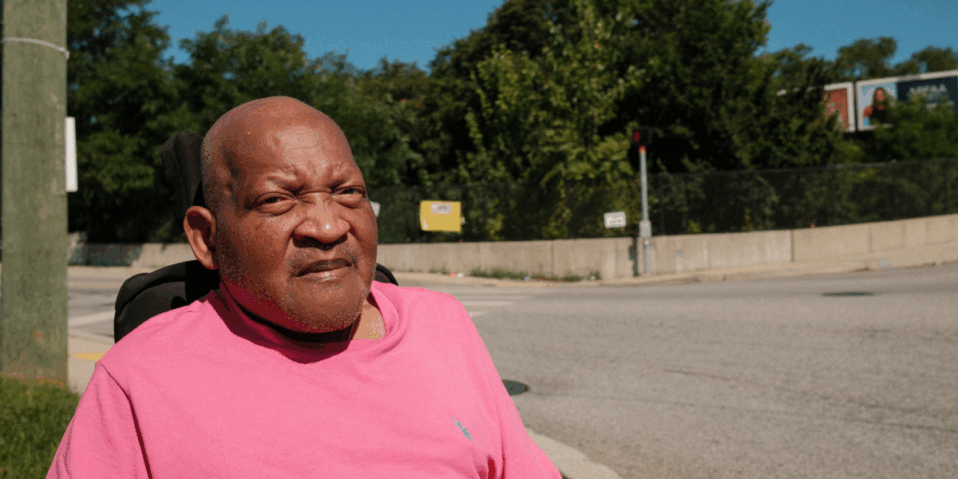How would your life be different if you couldn’t drive for a week? What if you had to take the bus, use the sidewalks (or streets as a pedestrian), or use paratransit to get around? Floyd Hartley, a 72-year-old Baltimore resident who uses a wheelchair, does just that. Floyd is the chairperson of the grassroots organization, Consumers for Accessible Ride Services (CARS) that is made up of paratransit riders/advocates seeking to improve services in the Baltimore metropolitan area.
Floyd’s experiences show us why more people should participate in Week Without Driving where advocates ask drivers to give up their cars for seven days and travel the way millions of Americans do every day. Floyd’s story helps us understand what really needs to change in our transportation system and that we can’t keep prioritizing cars.
Getting Around Baltimore in a Wheelchair
Floyd has been using the Maryland Transportation Administration’s paratransit service, MobilityLink, since 2004. Paratransit is a specialized transit service for people with disabilities who are unable to independently use fixed route transportation, like the bus or metro. MTA’s Mobility is a shared ride service that picks up its passengers at their door and drops them out at their requested destination. While this sounds convenient, Floyd’s daily travel is full of challenges most drivers never think about.
Just leaving his house is an adventure. Floyd lives near a busy street with no speed bumps. He has to travel through an alley to get to the main road, then navigate cracked sidewalks that are “bumpy, bumpy, bumpy all the way through.”
“There’s instances where you may find a pole that’s in the middle of the sidewalk that you have to navigate around or go in the street just to get back onto the sidewalk,” Floyd explains. Sometimes grass grows onto the sidewalk, creating another barrier. Many curb ramps are old and haven’t been replaced in years.
When Floyd reaches the major intersection near his home, he faces even bigger challenges. Cars come from four different directions, and drivers can turn right on red lights. “You really have to be on the lookout,” he says. There are no buttons to push for longer crossing times, no countdown timers, and no signs warning drivers that wheelchair users frequently cross there.
When Transportation Fails
Floyd’s transportation troubles don’t end with bad sidewalks. Even when he schedules a Mobility ride, things often go wrong. Mobility operators sometimes don’t follow instructions and get stuck in his narrow alley. When this happens, it can take an hour for a supervisor to help them get unstuck.
“I have missed appointments because of that,” Floyd says. A few months ago, he missed a doctor’s appointment when a driver got stuck and needed help backing out of the alley.
Sometimes the bus lifts break down. Floyd has been stuck halfway up in the air, waiting for someone to manually crank the lift so it works again. “It’s not a good feeling being stuck halfway up in the air,” he says.
The buses themselves are uncomfortable. Floyd says the ride is so bumpy and rough that he sometimes needs to take pain medication before or after traveling. “We all are hoping that they would get something [vehicles] with a lot better shocks on them because the ride is horrendous, trust me,” Floyd says.
Missing Out on Life
These transportation problems affect more than just Floyd’s ability to get to appointments. They change how he lives his life.
Floyd loves sports and used to participate in athletics when he was younger. There’s a youth football league in his neighborhood that he’d love to watch, but the sidewalk conditions and distance to bus stops make it too difficult to get there.
“It prevents me from going there,” Floyd says. “I find myself not going” to many places he’d like to visit.
Regular bus stops are too far apart, and the sidewalks between them are too damaged to navigate safely. Floyd often needs someone to come with him as extra eyes when he travels to busier areas.
Come back for part 2…

